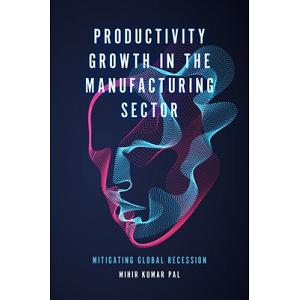1. Malaysia focuses in implementing the eighth Malaysian plan successfully and continues in the ninth Malaysian plan. The ninth Malaysian plan emphasis on the improvement of towards enhancing productivity and innovative capacity. During the Eighth Plan period, gross domestic product (GDP) in real terms grew at an average rate of 4.5 per cent per annum supported by domestic demand and exports. The productivity and efficiency enhancing by becoming more knowledge-based and the productivity factor contribution undertaken through programmes to upgrade skills and management capabilities, develop a more creative and skilled workforce, improve the level of educational attainment, intensify R&D and innovation activities and increase utilization of
 |
| Productivity Growth in the Manufacturing Sector: Mitigating Global Recession |
3. The high capacity utilization in manufacturing. The capacity utilization rate in the manufacturing sector remained high averaging 80 per cent per year. Growth was led by resource-based industries which recorded an average growth of 5.0 per cent per annum. The main contributors to growth were the chemical products, food processing, rubber products and paper product subsector. For non – resources based industries, the electronic subsectors remained the largest contributors. Besides the high capacity utilization, the growth of manufactured export of those products to china, India and Easter Europe reflects the sustained expansion in demand.
4. Productivity growth of the economic sectors. Manufacturing’s productivity to grow with high capacity utilization and the implementation of productivity and quality system. In the service industry, high productivity growth was in Finance and Transport sectors. In Agricultural sector, the continuous adoption of labor – saving technologies and good agricultural practices. In utilities sector, there are sustained demand for electricity and water. And the construction sector, strong demand for non – residential properties.
5. Competitive performance by consistently performed well in economic performance and business efficiency. In the population greater than 20 million categories, Malaysia was ranked at 4th position for business efficiency as an effort from the government in facilitating business operation. Malaysia was ranked 6th position in both the economic performance and government efficiency. Both the government’s pragmatic and flexible management approach have enabled the economy to raise its competitiveness in facing global challenges. In terms of labor cost competitiveness, the cost of producing one unit of product or service in Malaysia was lower by 0.7%, while other countries registered higher cost of production. In China, the unit labor cost had increased by 13.2%, Hong Kong (2.8%), Australia (2.8%), Norway (2.2.%), the USA (1.9%) and the United Kingdom (1.7%). The productivity growth of 4.2% achieved by Malaysia had led to sustained labor cost competitiveness.
🌿 Productivity Growth: Lessons from Nature
In the rhythm of nature, we find one of the clearest metaphors for sustainable productivity. A flourishing garden is never accidental — it is the result of careful nurturing, time, and alignment with natural laws. The fresh green leaves in this image remind us that growth, whether in business or personal productivity, demands consistent input and space to flourish.
The Qur’an beautifully captures this principle in Surah Ibrahim (14:24–25):
“Do you not see how Allah presents an example? A good word is like a good tree—its root is firmly fixed and its branches are high in the sky. It produces its fruit all the time, by the permission of its Lord.”
(Quran Surah Ibrahim: 24–25)
Like the tree, productivity grows when rooted in purpose and nourished by knowledge and action. In entrepreneurship, education, or daily work, we are called to plant well, prune wisely, and remain consistent.
📸 Photo available on Shutterstock:
Perfect for illustrating blog posts or reports on growth, sustainability, business development, or productivity strategy.
“Let growth be visible. Use this metaphor-rich visual to spark insight in your next project.”

No comments:
Post a Comment